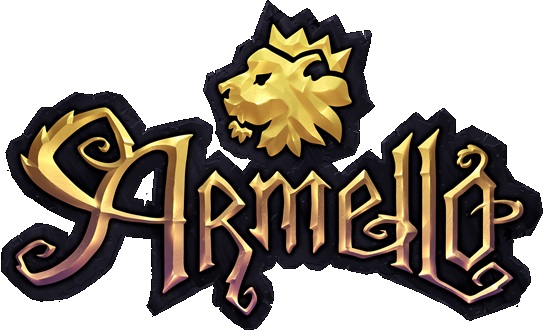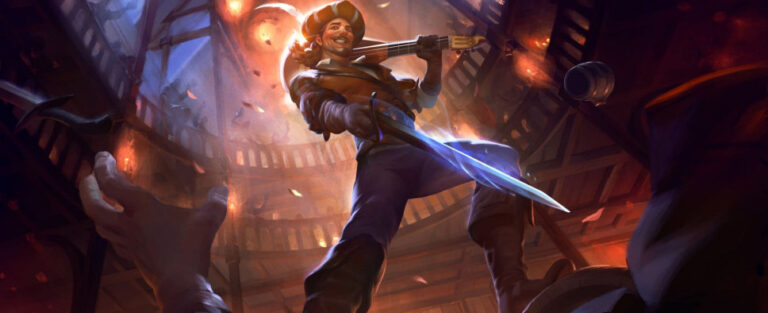The Incredible Adventures of Van Helsing is an upcoming action role-playing game from Hungarian developer NeocoreGames, who are probably best known for their King Arthur “role-playing wargames” (Van Helsing is in fact the first game they’ve created that doesn’t have the word “king” in its title). Neocore was kind enough to supply us with a preview build of the game, which contained about half of the first act, or four hours of gameplay. This was enough to show the mechanics of the game and how character advancement works, but still leave plenty to the imagination.
In Van Helsing, you play the son of the Van Helsing character from Bram Stoker’s Dracula (or, more likely, the son of the Hugh Jackman character from the recent Van Helsing movie). You’re a monster hunter, and you’re friends with a ghost named Katarina, who serves as your companion. Interestingly, despite being a ghost, Katarina can use equipment and fight enemies, and she’s also given a behavior panel where you can choose how she fights, when she uses potions (if ever), and what items she picks up (if any). Torchlight fans will be happy to hear that you can order Katarina back to town to sell excess equipment and buy potions.
Van Helsing uses a classless system. When you create your character, you just give him a name and choose a difficulty level (including a hardcore option), and that’s it. Then as you play, you put points into your attributes — body (melee damage, hit points, defense), dexterity (ranged damage, dodge), willpower (mana points, spellpower), and luck (magic find, dodge, critical damage) — and your skills. There are three skill trees — one each for melee attacks and ranged attacks, plus another for “tricks” and auras, which you find or purchase as you play your way through the campaign.
I mostly played a ranged character during my time with the game, and so I invested points in the Shoot skill, which increased my basic ranged attack damage, and the Explosive Shot skill, which gave me an area-effect attack. I also could have picked Icicle Shot (to slow enemies down) or Flaming Sphere (to burn them) or Full Resistance (to improve my resistances). The more points you put into a skill tree, the better the skills in that tree work, and so you’re better off specializing rather than trying to be a jack of all trades. Of course, the deeper you get into a tree, the more expensive the skills become, and so you might have tougher choices later in the game. My character only reached level 11, and so I only saw the first two tiers (out of three) for each tree.
The interface for Van Helsing is about what you would expect for an action role-playing game. The camera gives you an isometric view of your surroundings, and the left mouse button does the bulk of the work, allowing you to move, attack, and pick up loot. You can also use the right mouse button for a secondary skill, press the Q key to quaff a healing potion (all of the healing potions are the same, so a single key is enough), press the R key to switch between melee and ranged attacks, and press the shift key to attack without moving.
What you do in Van Helsing, for the most part, is kill stuff. During the early part of the campaign, you encounter bandits, werewolves, mechanical men (who look a lot like British redcoats), harpies, and more. You also talk to people to pick up quests and purchase equipment, which sometimes requires you to make decisions. For example, at the end of one quest, I had to make a choice about killing or freeing a werewolf. I decided to let him go, and later I got a reward because of it. I also saw some places where I had to choose what to do with quest items, where different actions give different rewards.
When you kill enemies in the game, you use your skills, which (other than the basic melee and ranged attacks) cost mana. Each skill also includes some powerups, which require you to spend rage to use. You gain rage as you fight things. As an example, the Explosive Shot skill has three powerups: Shrapnel (to increase the blast radius), High Explosive (to increase the damage), and Hex Round (to steal back some mana). The more rage you spend on a powerup, the better it works (up to 3X), but interestingly, some passive bonuses give you better damage if you’re at full rage, and so you have to decide if you should use your powerups or not.
You can also earn perks to improve your character. As you kill bosses and mini-bosses, you earn reputation points (another nod to Torchlight), which eventually lead to you increasing your reputation level, and each time you gain a reputation level, you get to pick a new perk. Perks provide you with useful passive bonuses, but the ones you have available depend upon how you’ve been playing the game. For example, if you loot enough equipment from the enemies you kill, then you gain access to the Scavenger perk, which gives you an extra inventory bag. And if you do enough elemental damage, then you gain access to the Elementalist perk, which increases your magic damage and resistance. During my time with the game, I saw 15 different perks, and I was able to choose three of them.
Of course, with Van Helsing being an action RPG, you also find a variety of equipment to help you in your pursuit of killing monsters. Your character can wear 12 different items, including three pieces of jewelry, two weapons (one ranged and one melee), a cloak, five kinds of armor, and a trophy. Meanwhile, Katarina can only wear jewelry, weapons, and body armor. Your equipment and Katarina’s equipment are exactly the same, and the game makes it easy to see if the new items you find are upgrades for either character. The equipment comes in (I think) four tiers of rarity, with the rarest items being the most powerful. I saw three of the tiers while I was playing (white, blue, and yellow), and I also saw some unique items (orange), but I didn’t see any set items.
Along with just finding equipment, the game gives you a few ways to manipulate it. One armorer has a forge, and if you place three items of the same quality on it, then you get back an item of slightly better quality (so three blues might give you a better blue, or maybe a yellow). You can also add essences to certain items, with essences working about the same as gems and sockets in other games. Finally, the interface indicates that you’ll eventually be able to do some gambling, but I didn’t see any options for it in the starter town.
So far I’d say that The Incredible Adventures of Van Helsing looks pretty good. I liked the theme of the game, with fighting evil creatures in dark caves and forests, and I also enjoyed the rapport between Van Helsing and Katarina, who have amusing conversations with each other. I didn’t see much of the main storyline (you receive a plea for help from somebody in Borgova, but I was still on my way there when the preview build ended), and so your ultimate goal in the game is still a mystery, but I’m optimistic that it will be fun and surprising based on the writing samples I’ve seen so far. Look for Van Helsing to be released at the end of this month.






